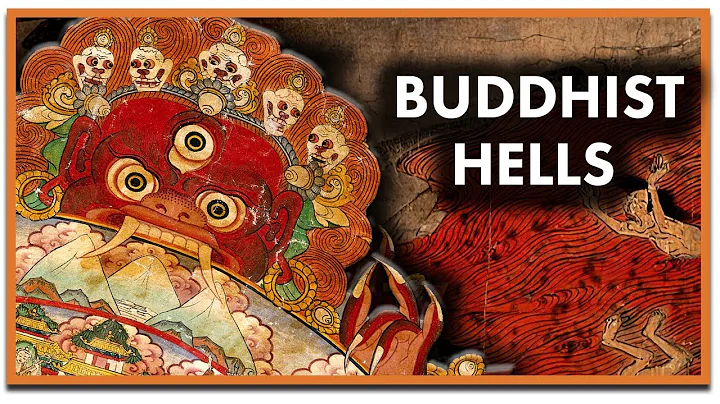
The eighteen Arhats 's respective meanings :
The highest level of cultivation and attainment by the Buddha's disciples is called "arhat". arhats was first introduced to China from India. Arhats are all pure in the six senses of body and mind, their ignorance and afflictions have been eliminated, they have already escaped from birth and death, and they have attained the joy of Nirvana. It can help people get rid of all troubles in life, accept the offerings of humans and heaven between heaven and earth, and help people no longer suffer from the suffering of reincarnation.

1 [ Riding Deer Arhat ] Meaning: A high official and generous salary
He was originally a minister of King Youdoyan of India. After becoming a monk, he often rode a deer back to the palace, persuaded the king to become a monk, and used various metaphors to illustrate the disgusting desire. Finally, he told the king to give way to the prince and become a monk. Therefore, people commonly call him "Radar Arhat" .

2 [Happy Arhat] Meaning: Enjoy yourself
He knows all the good and ugly things in the world, so a long time ago, he was an eloquent in the ancient Indian . He often smiled when debating.

Three [Rank the Arhat] Meaning: No worries about food and clothing
was originally a monk begging for alms. His method of begging alms was unique, and he held up an iron bowl and begged for food from others. After becoming enlightened, people called him the "Bowl Arhat".
Monks begging for alms is an ordinary thing. When begging for alms, they usually take the bowl to ask for alms. In order to show his sincerity, this arhat would lift the bowl onto his head every time he begs for alms. Although this method is easier to see the sincerity of the beggar, it is inevitable that the beggar will be exhausted over time after holding the bowl. This arhat is named after it.

Four [Ta Ta Luohan] Meaning: Buddhism is always in
was originally the last disciple of Buddha . In the pagoda is a symbol of Buddha. In order to commemorate and follow the Buddha, he specially made a pagoda with him. After becoming enlightened, people called it the "Tata Arhat".

5 [Sitting in Meditation Arhat] Meaning: As solid as a rock
His master thought of many ways to change his personality but did not achieve much results. He finally ordered him to sit in Meditation. At the beginning, this method was not very applicable, but he persisted under the supervision of his master, and finally changed his fierce and aggressive personality.

Six [Arhats crossing the river] Meaning: reaching the world
was originally a waiter of the Buddha, in charge of the Buddha's bathing. His mother gave birth to him under the Vadra tree (also known as the Virtue Tree), hence the name. It is said that Buddhism in East Indies spread because he crossed the river and sea by boat, so people call him a "crossing the river".

7【 Elephant Arhat 】Meaning: The road is flat
The Elephant Arhat is the waiter of the Buddha, who was originally an elephant trainer. Because the power of the image is great, hardworking and far-reaching, it is a symbol of Buddhism. Therefore, after becoming enlightened, people called him the "elephant-riding Arhat".

Eight [Laughtering Lion Arhat] Meaning: All diseases are not invaded
was originally a brave hunter, even lion and tiger can hunt. Later, he became a monk and abstained from killing and was about to attain Arhat fruit. Two little lions walked up to him and thanked him for putting down the butcher knife. After becoming enlightened, he brought these two little lions by his side, and was called "Laughter Lion Arhat".

9【 Happy Arhat 】Meaning: The heart and mouth correspond to
As the prince of Zhongtianzhu , the Happy Arhat could have inherited the throne smoothly, but he generously gave the throne to his younger brother, so he won the respect of others. Because he has a broad mind and always has a smile on his face, he is also called a happy arhat.

10 [Extend the Arhat] Meaning: Great enlightenment
was originally an illegitimate son born on the roadside, and he was brothers with the Sixteenth Arhat. Because he often used the half-lotus sitting method when meditating, he raised his hands and breathed a long breath. After he became enlightened, people in the world called him the "arachiya with his hands".

11 [Contemplation Arhat] Meaning: Deeply thoughtful
Contemplation Arhat is the biological son of Sakyamuni. He became a monk with his father. Among the ten great disciples of the Buddha, Buddhism and Taoism rank first. Once the contemplative Arhat falls into contemplation, no matter what happens in the outside world, it will not be able to interfere with him. Because he likes to meditate, his thinking is much more active than others. He is an Arhat with great wisdom.

Twelve [ Ear-Puhan ] Meaning: The six pure
Because the ears are strange and often make ear-Puhan, people simply call it Ear-Puhan. He focused on the Buddha, and the troubles from the outside could not interfere with him. He was famous for his purity of the ear roots, so he was called the Arhat of the ear.

Thirteen [Baoba Arhat] Meaning: There is a universe inside
Because the cloth bag Arhat often carries a cloth bag, he always smiles when he has nothing to do, and is also called cloth bag Maitreya. There are many wild animals in poor mountains and bad waters. Because the puppet arhats are worried that the poisonous snakes will hurt the people, they often take a puppet and catch snakes everywhere. He has a generous and generous personality. In order to ensure that the people are not bitten by snakes, he uses his clones to help people catch snakes. Because kindness influences God, he will eventually achieve the right result of cultivation.

Fourteen [Banana Arhat] Meaning: Diligent and learning
Banana Arhat is also called Vanapos Venerable. Because he often practiced under the banana tree after becoming a monk, he finally achieved the right result under the banana tree, so he was called a banana Arhat. The banana arhat has the ability to go to heaven and earth, and is one of the most powerful arhats.
Fifteenth [ Long-edged Arhat ] Meaning: Long-lived and good
Long-edged Arhat is the most devout Arhat among the many Arhats. He went through two lifetimes of practice before he achieved the right result. It is said that when he practiced in the first life, he still couldn't find the trick until his eyebrows fell out. When he did not give up in the second life, he continued to practice and finally achieved the right result. People in the world often only have one or two minutes of enthusiasm for doing things, but long eyebrows can spend two lives doing the same thing. Both their willpower and endurance are worthy of admiration.
Sixteen [Look at the Monarch] Meaning: Take it with the truth
Look at the Monarch is the most powerful arhat. He once damaged the door of the main family because he knocked too hard during begging for alms. In the end, not only did he not beg for alms successfully, but he also had to compensate the main family for the losses. After discovering this problem, the Buddha gave him a Buddha staff and asked him to put it at the door of the master's house. After the Buddha's guidance, Luo Han learned to put himself in his shoes and also developed the ability to forbear.
Seventeenth [ Dragon Subduing Arhat ] Meaning: Pacify the Sifang
According to legend, in ancient India, there was a dragon king who often maliciously operated precipitation because he was dissatisfied with the various things in the world, which led to frequent floods on earth, and the people were suffering. The Dragon Subduing Arhat personally surrendered the Dragon King who was indiscreet. From then on, the world finally became calm, so it was called the Dragon Subduing Arhat.

Eighteen [ The Tiger Arhat ] Meaning: Not afraid of hardships and dangers
He often stays in places where hungry tigers appear. Every time he encounters hungry tigers, not only will he not kill them, but he will distribute his food to hungry tigers. As time goes by, the tigers around him feel his kindness, so they let go of their guard and obey his orders. Compared with Jianglong, Fuhu obviously has more kindness. This can be seen from the fact that he could kill the tiger directly, but he was reluctant to hurt it, but instead gave up his own food.







![[English] Who Am I - Lecture 1 - Ven. Guan Cheng - DayDayNews](https://i.ytimg.com/vi/KU0fUs2It5o/hq720.jpg?sqp=-oaymwEcCNAFEJQDSFXyq4qpAw4IARUAAIhCGAFwAcABBg==&rs=AOn4CLDFpQUN_QwRfC7bmP4sUadq-RcYdg)
![A Moving Masterpiece 清明上河图 [English narration] - DayDayNews](https://i.ytimg.com/vi/kxff-4GktOI/hqdefault.jpg?sqp=-oaymwEcCOADEI4CSFXyq4qpAw4IARUAAIhCGAFwAcABBg==&rs=AOn4CLBtHGLeUpJNCYDJYnZTuISQ1N5Vag)


